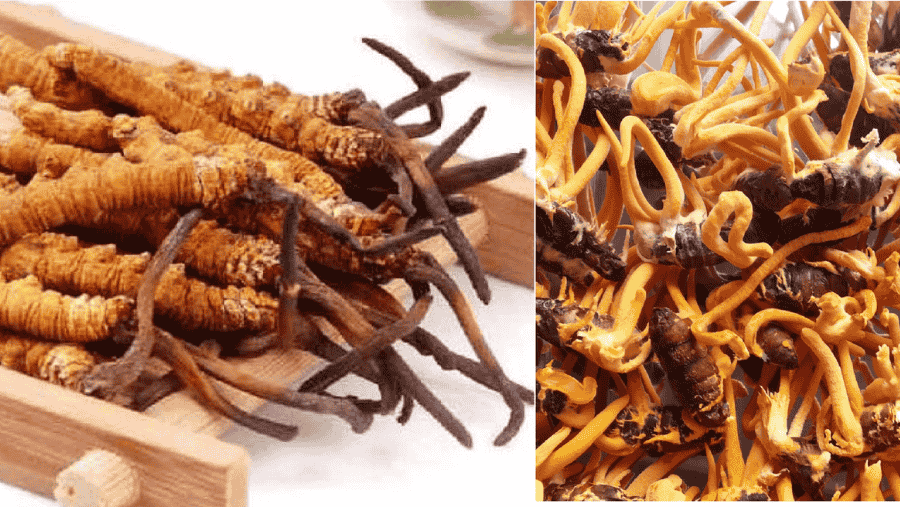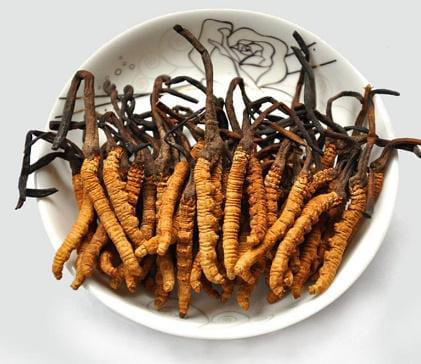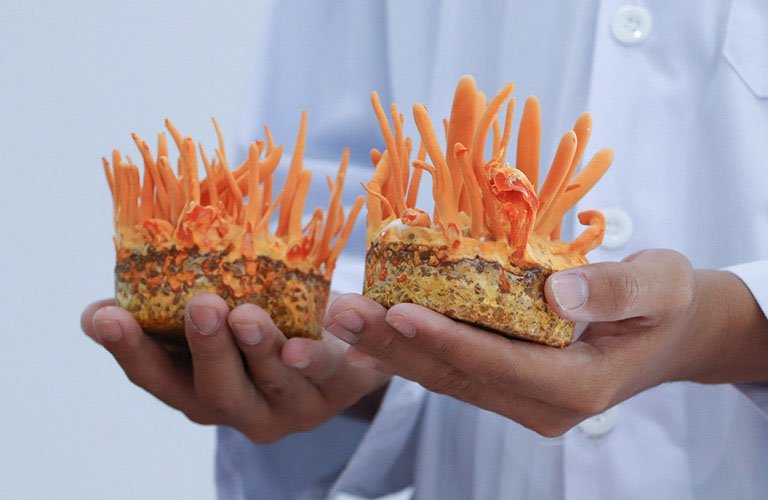When it comes to Cordyceps, everyone knows it as an incredibly beneficial herb for health, with an exceptionally high price that can reach billions of VND. Currently, there are two main types of Cordyceps: wild Cordyceps and cultivated Cordyceps.
Before determining which one is better, let’s take a closer look at the growth conditions of these two types.
Wild Cordyceps
Wild Cordyceps grows on mountain ranges at altitudes of 3,000m to 5,000m above sea level. Through research, approximately 300 different types of Cordyceps have been identified. However, only two types, Cordyceps sinensis and Cordyceps militaris, contain nutrients beneficial to human health.
The formation and development process of wild Cordyceps takes 3 to 5 years. This involves the fungus parasitizing and absorbing all the nutrients from ghost moth larvae, which hibernate underground to survive the harsh winter cold. The fungus gradually transforms the larvae into its root base. By summer, the fungus sprouts above the ground, resembling a blade of grass.
Cultivated Cordyceps
To replace the rare and expensive wild Cordyceps, scientists have developed and introduced cultivated Cordyceps products to the market. The cultivation process involves using hosts such as silkworm pupae, cicadas, stink bugs, and brown rice.
The process of inoculating Cordyceps militaris fungal spores onto the hosts is carried out entirely in glass containers at a temperature of 120°C. For substrates derived from brown rice, they must first be sterilized at 150°C before the fungus is inoculated under completely sterile conditions.
To ensure the fungus develops properly, factors such as temperature, light, humidity, and nutritional environment in the cultivation area must be carefully controlled to mimic the conditions of high-altitude plateaus at 3,000m to 5,000m.
How to Differentiate Between Wild and Cultivated Cordyceps
1. Appearance, Color, and Size
For wild Cordyceps, the root typically has the shape of a slender caterpillar body, which is smaller, with a tougher and drier tip due to the harsher natural environment. In contrast, in artificial cultivation, the fungus grows larger, plumper, and more visually appealing because the hosts are carefully selected and provided with sufficient nutrients.
Natural Cordyceps has a slightly dark yellow or golden-brown color, with a shape closely resembling a real caterpillar. It has fungal threads sprouting from the head, shiny black eyes, and a distinct fishy smell. Cultivated Cordyceps has an orange-pink body with a club-shaped fruiting tip, growing from any part where the fungal spores are inoculated. Meanwhile, Cordyceps grown on a brown rice substrate appears as an orange fungal mass with a base formed from the brown rice substrate.
Nutritional Components
Although Cordyceps fungi grow in two different environments, they are both nutrient-rich herbs with valuable medicinal properties, beneficial for health and supporting disease treatment. They contain a full range of amino acids, vitamins B1, B2, B12, E, and K, proteins, bioactive compounds (HEAA, steroids, adenosine, cordycepic acid, etc.), and trace elements (K, Na, Se, etc.). Additionally, they contain militarin, which has anti-cancer effects, and adenosine, which is effective in treating cardiovascular diseases and blood pressure, along with many other nutritional components.
In summary
Cordyceps, whether wild or cultivated, is a nutrient-rich herb with significant medicinal properties. It contains essential amino acids, vitamins (B1, B2, B12, E, K), proteins, bioactive compounds (HEAA, steroids, adenosine, cordycepic acid), and trace elements (K, Na, Se). Key compounds like militarin and adenosine contribute to its anti-cancer effects and support for cardiovascular and blood pressure treatment, making it highly beneficial for overall health and disease management.




